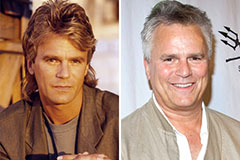When it comes to the exciting and often unforeseeable globe of professional wrestling, championship belts hold a significance that transcends simple decoration. They are the best symbols of accomplishment, effort, and supremacy within the made even circle. Among the most prestigious and traditionally abundant titles in the market are the WWF Champion Belts, a family tree that dates back to the really structure of what is currently referred to as copyright. These belts have not only stood for the peak of wrestling expertise but have actually likewise developed in layout and meaning along with the promotion itself, coming to be iconic artefacts treasured by followers worldwide.
The journey of the WWF Championship began in 1963 when the Globe Wide Fumbling Federation (WWWF), the precursor to the WWF and at some point copyright, was formed. Adhering to a conflict with the National Wrestling Partnership (NWA), Northeast marketers established their own banner and identified Buddy Rogers as their inaugural WWWF Whole world Heavyweight Champion on April 25, 1963. Surprisingly, some accounts suggest that Rogers was granted the WWWF title belt, which was an old USA title he already had, as a placeholder until a new style could be created.
Throughout the WWWF age (1963-1979), the champion belt went through several versions, often coinciding with the periods of its most noticeable owners. Bruno Sammartino, the famous "Living Legend," held the title for an amazing mixed total of over 4,000 days across two regimes. During his time, numerous designs were seen, consisting of one shaped like the adjoining USA, highlighting the local origins of the promotion. Later, a extra standard style including 2 wrestlers grappling over an eagle became synonymous with Sammartino's 2nd power and the champs that followed him, such as "Superstar" Billy Graham and Bob Backlund.
The year 1979 marked a considerable change as the WWWF formally ended up being the Entire world Wrestling Federation (WWF). This rebranding would eventually lead to changes in the championship's name and appearance. In the very early 1980s, as the WWF began its ascent towards coming to be a global phenomenon, a larger, eco-friendly leather belt with giant gold plates was presented. This design featured a wrestler holding a champion with the globe behind him, emphatically announcing the owner as the " Whole world Champ." Especially, the side plates of this version noted the family tree of previous champs, a practice that recognized the title's abundant history. This legendary belt was held by numbers like Bob Backlund, The Iron Sheik, and, many famously, Hulk Hogan, that lugged it during the "Hulkamania" age, a duration of unmatched mainstream success for the WWF.
The mid to late 1980s saw the introduction of what many take into consideration one of the most precious styles in battling background: the "Winged Eagle" champion. Debuting in very early 1988, wwf belts with Hunk Hogan as the very first owner, this style featured a stunning eagle with outstretched wings as the focal point, flanked by smaller sized side plates. The "Winged Eagle" belt became a symbol of quality throughout the late 1980s "Rock 'n' Wrestling" period and well into the 1990s " Brand-new Generation" period. Legendary champions such as Randy Savage, The Ultimate Warrior, Bret " Gunman" Hart, and Shawn Michaels all proudly held this variation of the title. The "Winged Eagle" also transitioned into the very early years of the "Attitude Period," with "Stone Cold" Steve Austin being the last permanent champion to wear it.
The " Mindset Period," which exploded in appeal in the late 1990s, brought with it a more hostile and edgy aesthetic, mirrored in the WWF Championship layout. In late 1998, the "Big Eagle" belt was introduced. This design included a larger main plate with a prominent WWF "scratch" logo, symbolizing the company's modern identity. While maintaining a sense of prestige, the " Large Eagle" design lined up with the rebellious spirit of the period and was held by fabulous figures like " Rock Cold" Steve Austin, The Rock, and Mick Foley.
As the schedule turned to the new millennium, the WWF underwent an additional change, coming to be Globe Wrestling Amusement (copyright) in 2002. This era likewise saw the unification of the WWF Champion with the copyright Champion ( obtained after copyright's purchase of Entire world Championship Wrestling). The " Indisputable" championship was represented by both the " Huge Eagle" and the copyright's "Big Gold Belt" being held concurrently. This unification was short-lived, as the re-established copyright split its lineup into two brand names, Raw and copyright, resulting in the production of a new World Heavyweight Champion for the Raw brand name, while the original title became unique to copyright and was renamed the copyright Champion.
Ever since, the copyright Championship has actually remained to advance in name and style. In the mid-2000s, John Cena presented the "Spinner" belt, a controversial but undoubtedly attention-grabbing layout featuring a large copyright logo design that could spin. This mirrored Cena's persona and interest a younger audience. Succeeding layouts have actually aimed to blend modern-day looks with a feeling of history and stature.
In recent years, specifically given that April 2022, the copyright Champion has been protected alongside the copyright Universal Champion as the Undeniable copyright Universal Championship, though both titles preserved their specific lineages. Originally represented by both belts, a solitary, unified design eventually arised, adorned with black rubies and the holder's customized side plates. Since April 13, 2025, Cody Rhodes holds the Undeniable copyright Champion, having actually combined it after beating Roman Reigns at copyright XL in 2024. Following his triumph, copyright formally relabelled the unified title to the Indisputable copyright Champion.
The WWF Champion Belts, throughout their various versions, have actually functioned as greater than just rewards. They stand for legacies, ages, and the plenty of stories told within the wrestling ring. Each design is intrinsically connected to the champs who held them and the durations they defined. From the traditional splendour of the "Winged Eagle" to the vibrant declaration of the "Spinner" and the existing unified layout, these belts are concrete pieces of wrestling background, instantly recognizable signs of greatness on the planet of specialist fumbling. Their advancement mirrors the development of the company itself, constantly adapting to the times while for life recognizing the rich custom whereupon they were built.
 Tiffany Trump Then & Now!
Tiffany Trump Then & Now! Batista Then & Now!
Batista Then & Now! Brooke Shields Then & Now!
Brooke Shields Then & Now! Mary Beth McDonough Then & Now!
Mary Beth McDonough Then & Now! Richard Dean Anderson Then & Now!
Richard Dean Anderson Then & Now!